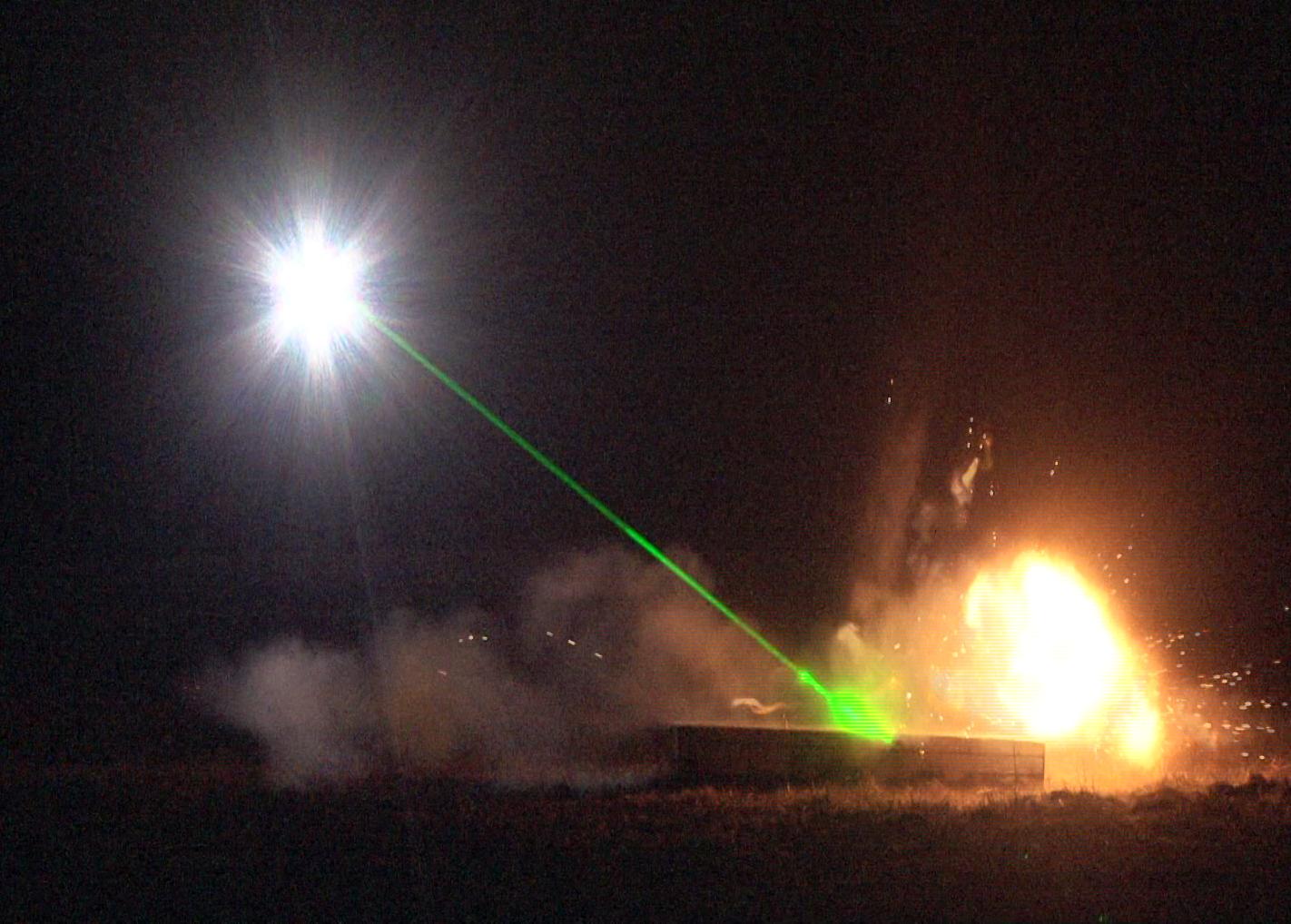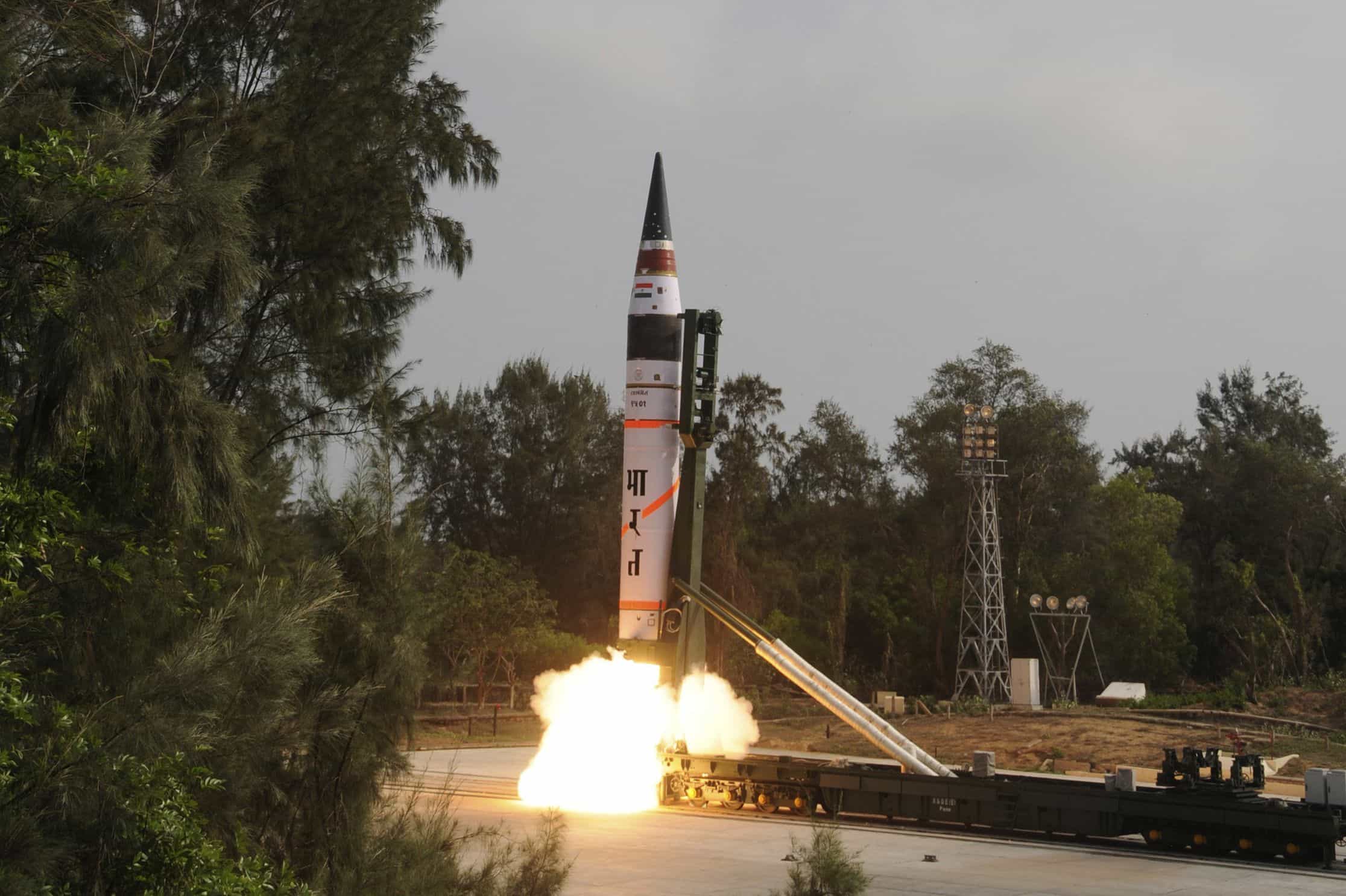Directed energy weapons have been on the Air Force’s horizon for decades.
Defined as a device such as a high energy laser or a high power microwave developmental system, the Air Force has a 40-year history of demonstrating the lethality of directed energy.
In the ’70s, an Air Force Research Laboratory team went from testing laser fire at a variety of stationary targets to firing the lasers at moving airborne targets, to shooting down a drone, according to a Global Security fact sheet.
Enhancements in technology have led to advances in chemical lasers, optics and beam control, from Theodore Maiman’s invention of the first laser in 1960 to the Airborne Laser lab in the 1980s. As the Air Force’s platform of machinery and technology grows, Airmen and civilians in the service have fostered a culture that values and applies Airmen’s best ideas to improve current and future operations.
Directed energy has been a part of that culture for decades.
From a defense standpoint, directed energy weapons are a benefit and are currently being pursued as one of the key technologies among multiple services because they can make a major difference against anti-access and area-denial systems, according to Mr. Mark Gunzinger, Senior Fellow at the Center for Strategic and Budgetary Assessments in Washington, D.C.
The chemical lasers developed during the Airborne Laser program were designed to destroy ballistic missiles during their boost and ascent phases of flight when the laser’s energy can weaken the missile structure enough to cause it to fail under the stresses of flight.
“In the ’80s, the Airborne Laser Laboratory team shot down air-to-air sidewinder missiles and cruise missiles (using chemically powered lasers) in flight,” said Dr. Janet Fender, Air Combat Command scientific advisor to the commander of ACC. “In 2010, the Airborne Laser shot down a long-range missile in flight.”
However, chemically powered lasers didn’t prove to be as cost-effective as planned. In 2010, then-Defense Secretary Robert Gates cut the $11 billion program for chemically powered laser anti-missile weapons programs due to fiscal constraints.
One issue with those lasers is that they needed to be flown on a specific type of airframe.
“The problem is chemical lasers use chemicals as fuel to generate energy and that fuel is expendable, as well as being highly toxic,” Gunzinger said. “The size, weight, heating, cooling and electric power requirements for chemical lasers were so extensive that they required very large aircraft, such as the (Boeing) 747 or a C-130.”
“Operating these large, non-stealthy aircraft such as a 747 close to potential target areas that are defended by advanced surface-to-air systems is not terribly practical,” Gunzinger added.
This would have required a fleet of 10 to 20 aircraft, costing $1.5 billion per airframe to produce. Additionally, tens of millions of dollars in maintenance and operational support would have been spent annually to keep these aircraft aloft.
“Those were chemical lasers. Now we’ve turned to electrically powered (solid-state) lasers that don’t involve the chemicals,” Fender said. “(Solid-state lasers) have large magazines to address multiple targets rapidly.”
Unlike conventional munitions and weapons systems, solid-state directed energy weapons are nonexpendable.
“When you release your (expendable) munition, it’s gone,” Fender said. “With a directed-energy weapon, it stays on board, and you recharge and fire.”
“They are a huge force multiplier,” she said. “What that means is that with directed energy weapons, one can be in the fight with greater persistence, lethality and survivability.” Since around 2004 to 2005, Air Force leadership has voiced interest over the years in solid-state (electrically powered) laser weapon systems, as opposed to chemically-powered lasers.
“The DE community rallied incredibly quickly to develop the new class of lasers,” Fender said.
Solid-state laser technology is now in the developmental phase and is expected to shift to the test phase within the next decade, according to Gunzinger.
“They are moving lab bench lasers out to the field to mature them and operate them in a more realistic environment,” Fender said. “When directed energy is fielded, pilots can select whether they want to use the kinetic (the expendables) or the non-kinetic (solid-state lasers), depending on the target they’re addressing. So now you see they’ve expanded their magazine tremendously with directed energy.”
Directed energy weapons are not the only capabilities needed for future aerial warfare, Gunzinger said.
“It’s going to require a combination of new kinetic as well as non-kinetic capabilities,” he added.
As kinetic and non-kinetic weapons systems are combined, it is expected to save money over time, thus making directed energy an innovative solution to fiscal constraints, according to both Gunzinger and Fender.
“Harnessing Airmen’s creativity has always been vital to the Air Force’s ability to improve our enterprise,” said former Air Force Secretary Deborah Lee James.
The projected cost, per shot, of a laser weapon is estimated to be equal to the cost of a liter of jet fuel.
“We’re talking about dollars. So now the Air Force can start to address some of those widely proliferating cheap but still lethal threats with very inexpensive directed energy,” Fender said.
“On the other end of the spectrum, a lot of our near-peer adversaries are producing and fielding sophisticated weapons of their own,” she added. “Now, we’re talking hundreds of thousands of dollars per unit. And if we can negate adversary expensive weapons with our laser weapons that cost dollars per shot, we have really reversed the cost equation.”
Current challenges to directed energy are presently being researched by subject matter experts for mitigation and correction. One technical challenge for solid-state airborne lasers is laser transmission through air turbulence that distorts and misdirects the beam.
“Precise turbulence correction and laser beam pointing are essential to achieve the desired effect at a distant target,” Fender said. “That’s a really important area. Also the Air Force is embarking on an experimentation campaign to operationalize directed energy. This is a series of experiments designed to evaluate performance, understand limitations, and develop concepts of employment, concepts of operation, and basically to mature the technology.”
An experimentation campaign will develop after scientists and researchers complete the current-developmental phase.
“We’ll have near-term applications as you see technologies mature,” Fender said. “Then the commands will step up and say, ‘We’re ready for this capability’ while the longer-term applications are still under development. So I think there’s going to be a continuum of capabilities out of this experimentation campaign and I think that’s exactly the right approach.”











